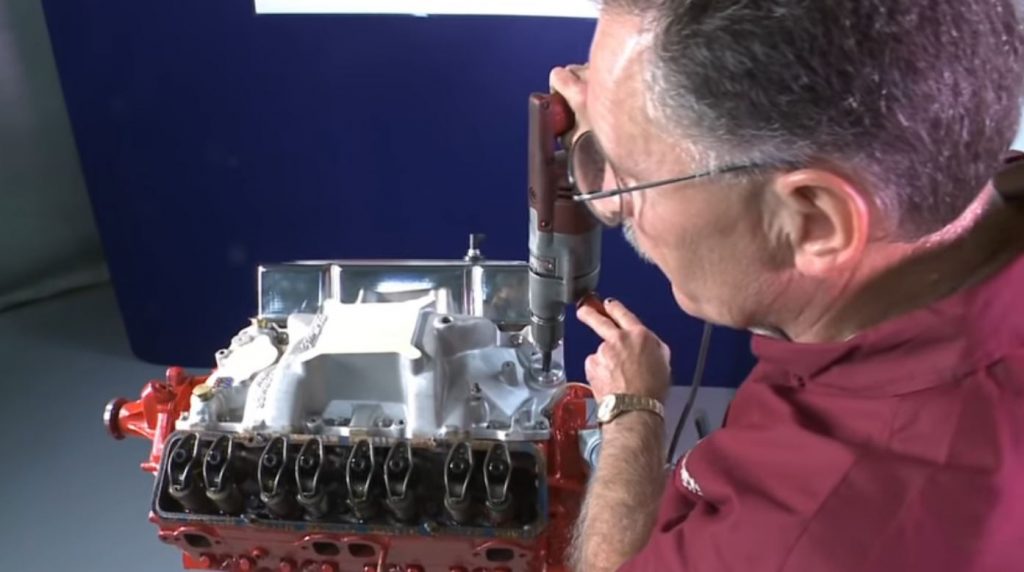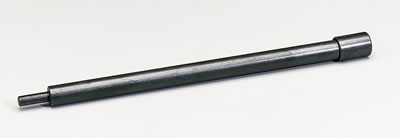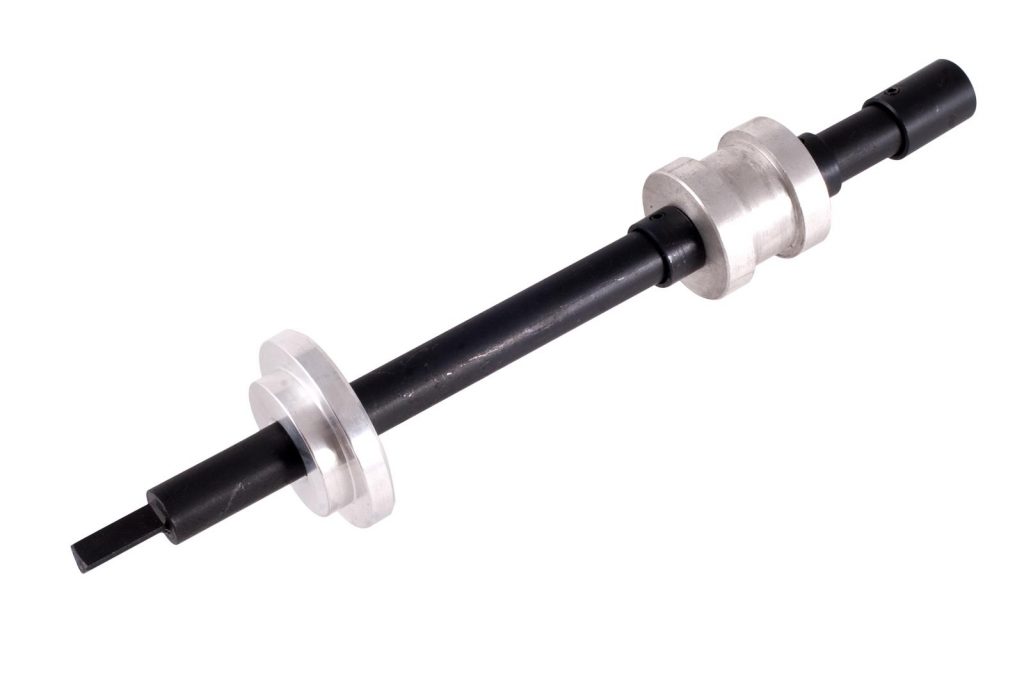
Despite sharing a name, not all oil pump primers are designed for the same job—certain oil pump primers are made to only prime the oil pump, while others can prime the entire engine, including the top end. These latter-style primers often feature a collar and/or bushing design which allows you to use a power drill to drive the pump, build oil pressure within the motor, and draw oil up onto the cam and valvetrain. (We’ll dive into that exact process in a sec.)
Note, for most of this article we’re talking about specific domestic V8 (and some V6) engine designs that rely on an oil pump that’s driven off the distributor via an intermediate shaft. We’ll get to prelubers for modern engines near the end of this post.
But it’s not uncommon for folks to buy an oil pump primer that’s not right for their needs. So it’s really important to know the distinction, depending on what job you want your oil pump primer to tackle.
Single Rod Oil Pump Primer

Sometimes it’s helpful to use a primer tool on your oil pump prior to installation, so you can test its operation and prime the pump before sticking it on your engine. For these jobs, a simple shaft adapter is all you need. And that’s what you see above.
Yet a lot of gearheads buy these types of primers expecting to use them to prime an engine’s top-end. Then they get frustrated when they use a drill to drive the pump on the engine, and the oil pressure doesn’t climb. That’s because you need one fitted with a specialized bushing and collar, like the types we’re about to talk about…
Oil Pump Primer Rod with Bushing & Collar

No doubt about it, priming a freshly-built engine is absolutely, positively critical to ward off premature component wear and part failure. (In fact, we’ve already dedicated an entire article to the oil pump priming process.)
And for that job, many V8 engines (like small and big block Chevys) require an oil pump primer with a specially-designed collar and bushing assembly.
Here’s how it works in a nutshell: You simply slip the primer rod down the distributor shaft hole in the manifold. The bushing seals the oil galley, while the collar centers the rod and covers the hole. Then, you use an ordinary power drill to spin the rod, prime the pump, build oil pressure, and get oil up the passages and onto the camshaft, rockers, and valvetrain.
Again, if you’ve got an oil pump primer without the bushing and collar and try to do this, your drill will just spin and spin—you’ll never build pressure. So make sure you’re using the right tool for the job.
So…What’s an Engine Primer, Then?
The naming conventions can get a bit tricky here, because oil pump primers are also called engine primers. And that’s not wrong either; oil pump primers can certainly be engine primers too (as outlined above).
But there’s another option for lubing an engine before it’s first fired up—and that’s because a lot of modern engines, like the GM LS, have an oil pump that’s driven off the crankshaft instead of a (non-existent) distributor.
These types of engine primers are called engine prelubers, and they typically rely on a pressurized tank to force oil through the engine and into the valvetrain and other critical friction points. So again, make sure you know the distinction before you choose an engine primer for your application.
Summit Racing’s got a handy engine priming tool designed specifically for LS engines running an aftermarket timing set with a separate oil pump gear. Click here to learn more about it.
Video: See an Oil Pump Primer in Action
The engine experts over at Melling made a pretty awesome video that’ll show you exactly how both an engine oil primer tool and an engine preluber work. Check it out below:

[…] we ran an article on knowing the difference between oil pump primers. While the story focused on earlier V8s with distributor-driven oil pumps, we also touched briefly […]
HI, I am using the oil pump priming tool on my 283 small block and it has the bushing and the top collar. The system worked within 10 minutes as I got oil flow on drivers side of the head and will not flow on the passenger side, as I ran the drill at least 10 minutes more. I keep thinking the tool is not lined up correctly. My question is how far down does that collar go. I thought it is went down close to the pump the first time, like further down the shaft. I pulled out the tool to recharge the drill battery, and re-installed it to try to get oil on the passenger side, then noticed the bushing went only about 2 or 3 inches down and stays there. It will not go down any further.
Is that the correct spot for the bushing, like hardly down the shaft.. I tried to push it down as I was attempting to install the whole tool but it won’t move down any more. Thanks, Rod, From TheHotRodShop
I.read one article that said to put the drill in reverse. It didn’t say why. What is the correct direction to go.
Don Powell
Hey Donald, you didn’t mention what engine you had, but–generally speaking–you spin the drill/primer in the same direction as the distributor rotation–counter clockwise for a lot of domestic V8s.
Read more about this topic here: Oil Pump Primer Tech
Thanks for reading, hope this helps!